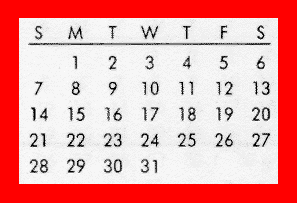Compulsion
The obsessional dimension of Darboven's art is best considered in the terms set forth by Rosalind Krauss in her essay on the "mad obstinacy" in Sol LeWitt's work. Krauss's essay proffers a reading of LeWitt applicable to forms of Conceptual art characterized by "loquaciousness." Darboven's output, dozens of works each running to over two thousand pages, poses little resistance to such a designation.
Like most of LeWitt's work, Variations of Incomplete Open Cubes [1974] provides one with an experience that is obsessional in kind. On the vast platform, too splayed to be taken in at a glance, the 122 neat little fragmented frames, all meticulously painted white, sit in regimented but meaningless lines, the demonstration of a kind of mad obstinacy... [U]nlike the algebraic expression of the expansion of a given series, where the formulaic is used precisely to foreclose the working out of every term in the series, LeWitt's work insistently applies its generative principle in each of its possible cases... The babble of a LeWitt serial expansion has nothing of the economy of the mathematician's language. It has the loquaciousness of the speech of children or of the very old, in that its refusal to summarize, to use the single example that would imply the whole, is like those feverish accounts of events composed of almost identical details, connected by "and."But it is not entirely like those examples. For garrulousness, babble, the spasmodic hiccup of repetitious detail, have about them a quality of randomness, disorganization... And LeWitt's outpouring of example, his piling up of instance, is riddled with system, shot through with order. There is, in Variations of Incomplete Open Cubes, as they say, a method to his madness. For what we find is the "system" of compulsion, of the obsessional's unwavering ritual, with its precision, its neatness, its finicky exactitutde, covering over an abyss of irrationality...
LeWitt spoke of it when he wrote, "Irrational thoughts should be followed absolutely and logically." The consequence of following this direction, and LeWitt's art does obey it, is to arrive at the opposite of Idealism...
To get inside the systems of this work...is precisely to enter a world without a center, a world of subsitutions and transpositions nowhere legitimated by the revelations of a transcendental subject... Aporia is a far more legitimate model for LeWitt's art than Mind, if only because aporia is a dilemma rather than a thing.
-- Rosalind E. Krauss, "LeWitt in Progress," The Originality of the Avant-Garde and Other Modernist Myths (Cambridge and London: MIT Press, 1985): 244-258.PHOTO: Sol LeWitt, Schematic Drawing for Incomplete Open Cubes, 1974, ink on paper.

For introductions to the major principles of Hanne Darboven's work, please click on the days of the week (e.g. M, T, W). For additional information, click on another date of the month.
